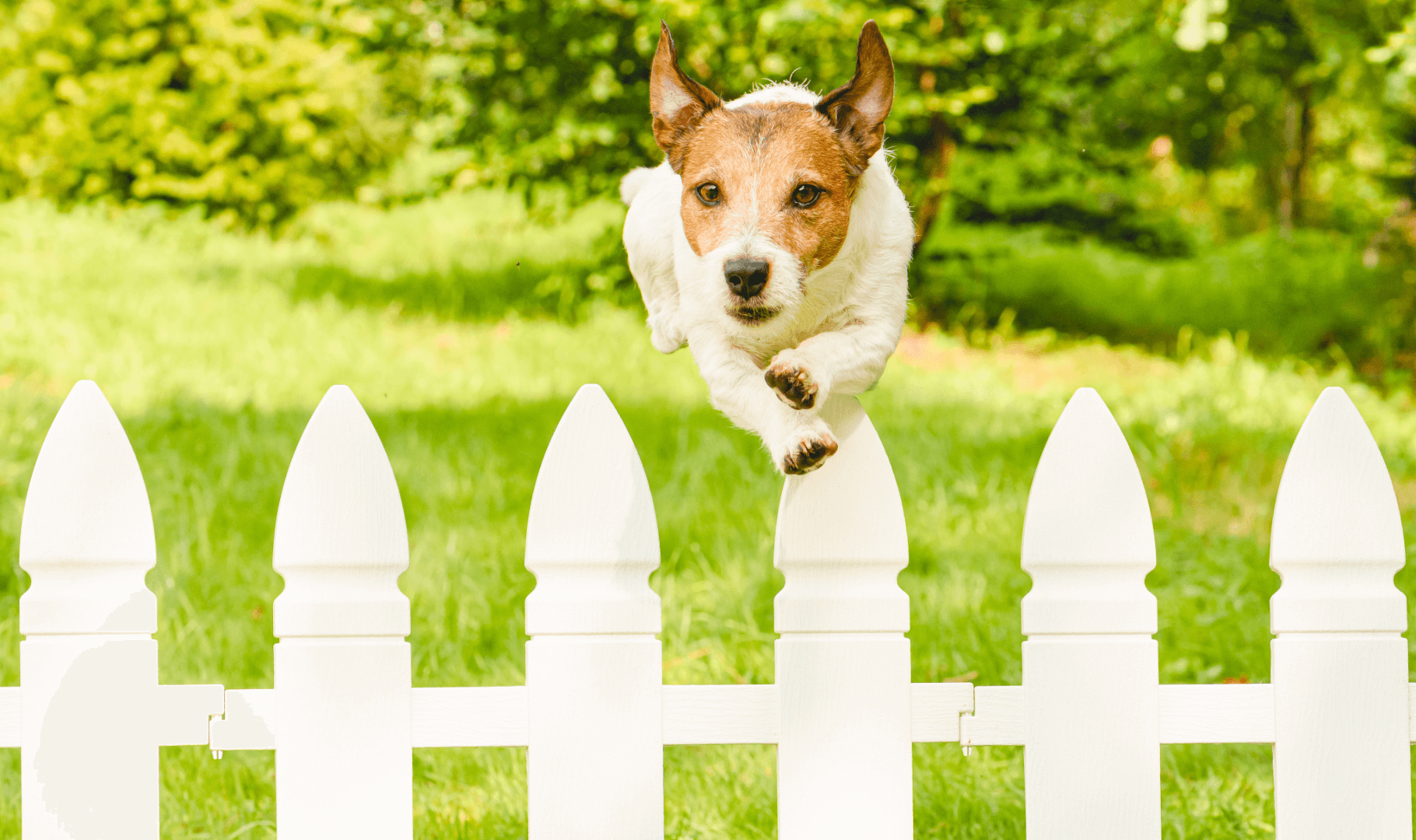Wireless vs Wired Dog Fence
The advantages and disadvantages of a wireless pet fenceA wireless dog collar works by emitting a signal in a circle around a centrally located transmitter. It consists of two components: the transmitter, which plugs into an outlet, and the receiver, which is housed in the wireless dog collar. The transmitter emits radio frequencies, and if the dog crosses the boundary, they will receive an electrical static stimulus. 
The GoodWireless dog fences can be installed quickly and easily. However, this simplicity can lead to certain drawbacks. The effectiveness of a wireless dog fence relies on the signal being able to evenly reach all areas. Yet, obstacles such as walls, landscaping elements, varying ground levels, vehicles, or other objects might obstruct the signal, resulting in inconsistent coverage. 
The Not so GoodThe circular coverage pattern restricts flexibility in the area to be covered, potentially leaving corners of the garden uncovered. This may confuse your dog. Additionally, if there is a specific area, like a flower bed, that needs protection from your dog, this style of fence will not be able to secure it. These fences are primarily designed for expansive areas with undefined boundaries. They are only suitable for very flat open areas as they rely on a clear line of sight, not suitable for farm settings, properties with garages, metal gates, sheds or where tractors, vans and cars drive onto a property, as they could cause the signal to drop and pets to escape. Similarly, properties on slopes or steps are not suitable for wireless dog fences. Most wireless pet fences have a minimum range setting of 50 meters, making them unsuitable for smaller gardens. Additionally, the boundary can fluctuate daily based on the reach of the frequency signal. When choosing a boundary, it's good to try to follow natural boundary markers e.g. fence, wall, line of bushes, trees or the edge of the lawn. Crossing the lawn, for example, we do not recommended, since the dog will not easily recognise a non natural boundary. In conclusion, although wireless dog fences can be quickly installed, they may not be practical for use in a standard household. The advantages and disadvantages of a wired pet fenceA wired dog fence, also known as an invisible or underground dog fence, works by using a wire buried around the perimeter of the area where you want to contain your dog. The wire transmits a radio signal that is picked up by a receiver collar worn by the dog. Therefore a transmitter can accommodate as many pets as you have collars. 
The GoodHidden dog containment systems offer a safer alternative. They are suitable for both large and small areas and can accommodate multiple dogs and cats. Unlike wireless fences, invisible wired pet fences can restrict access to any area while preventing your dog from leaving your yard. 
The Not so GoodOne common misconception about wired dog fences is that they are unsightly. However, this is not accurate as they are discreetly installed underground, remaining out of view. With proper planning and installation, the final outcome is highly effective and can be visually appealing. In conclusion, while a high-quality wired pet fence may require more time to set up initially, it ultimately results in a highly effective and long-lasting containment system. No two fence installations are the same, check out more Fence Layout & Installation Info here and get some additional options for Boundary Wire Installation. 
|
- Know About CookiesCookies are very small files that are stored in a user’s computer during net surfing; these files store information of user's browsing data such as password, ID, preference etc so that webpage loading becomes faster when a user visit the same pages next time. According to new Cookie law, you have to allow cookies to get the optimum surfing experience of this website. For more information on the cookies stored by this website, click each category. To remove this message and enable cookies, click Allow Cookies.
- Compliance CookieThis cookie is placed if you click the Allow button in this message. It tells us you have given your consent to the use of cookies on our site and stops this message from displaying.
Cookies used: PaieccookieCompliance - Types Of CookiesAnalytical Cookies:
With the help of these cookies we can find out traffic sources to our website along with page count, which facilitates us to measure the performance of our website at the same time, improvise on the sluggish areas. This all is attained by means of a service offered by Google Analytics.
Third Party Cookies:
There are numerous social media tools that we utilize on our website to increase the visitor interaction. By now if you use these platforms, their cookies possibly are set by means of our site. The said data/information may then be gathered by the companies that permit them to display advertisements on any other websites that they believe are appropriate as per your field of interest. Our website will not position these cookies on any of your device, unless you do not use such platforms.
Functional Cookies:
The vital site functionality is allowed by these ’functional cookies’. These get erased automatically when the browser is closed by the visitor and also do not consist any private details.

 Go to EU Site
Go to EU Site